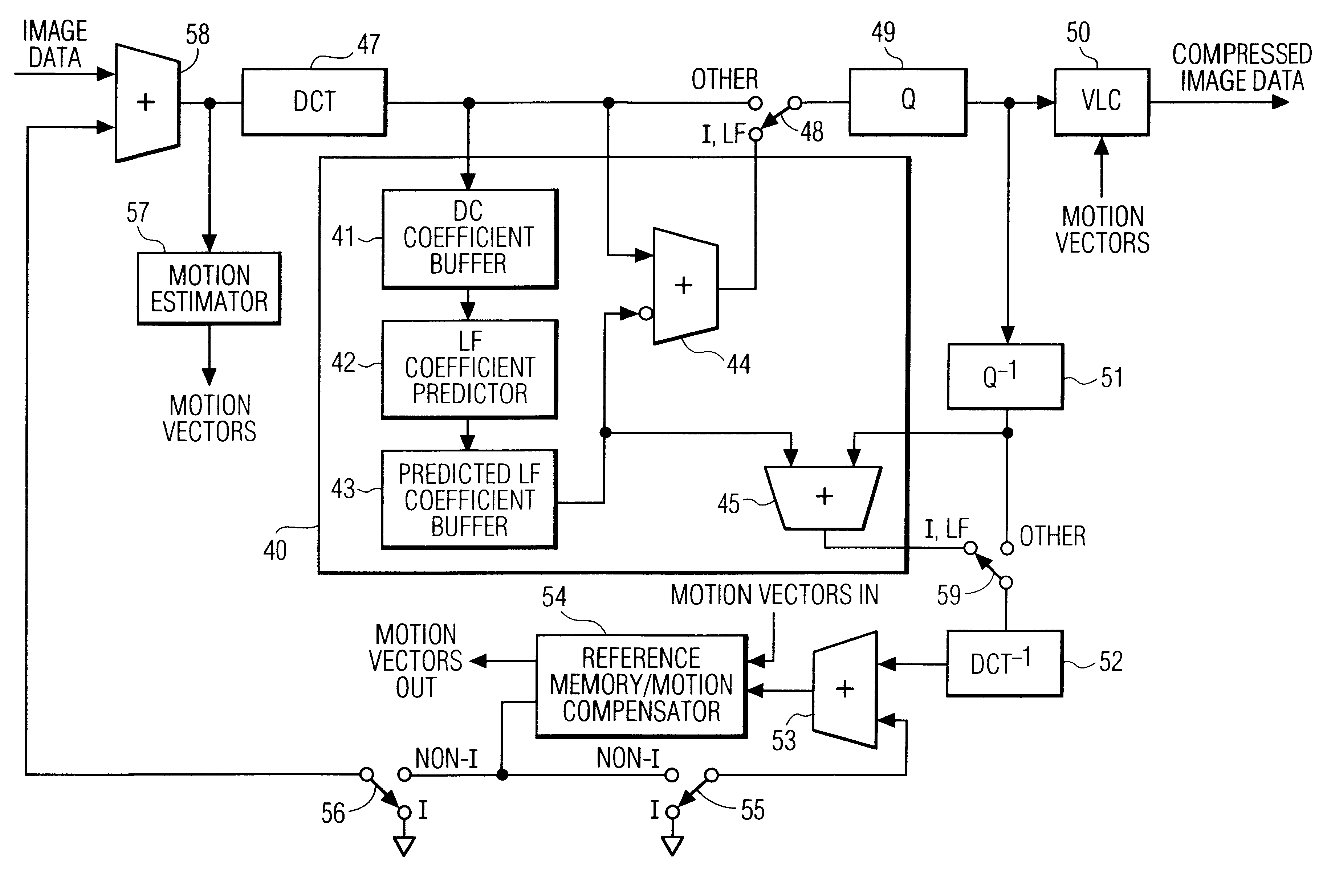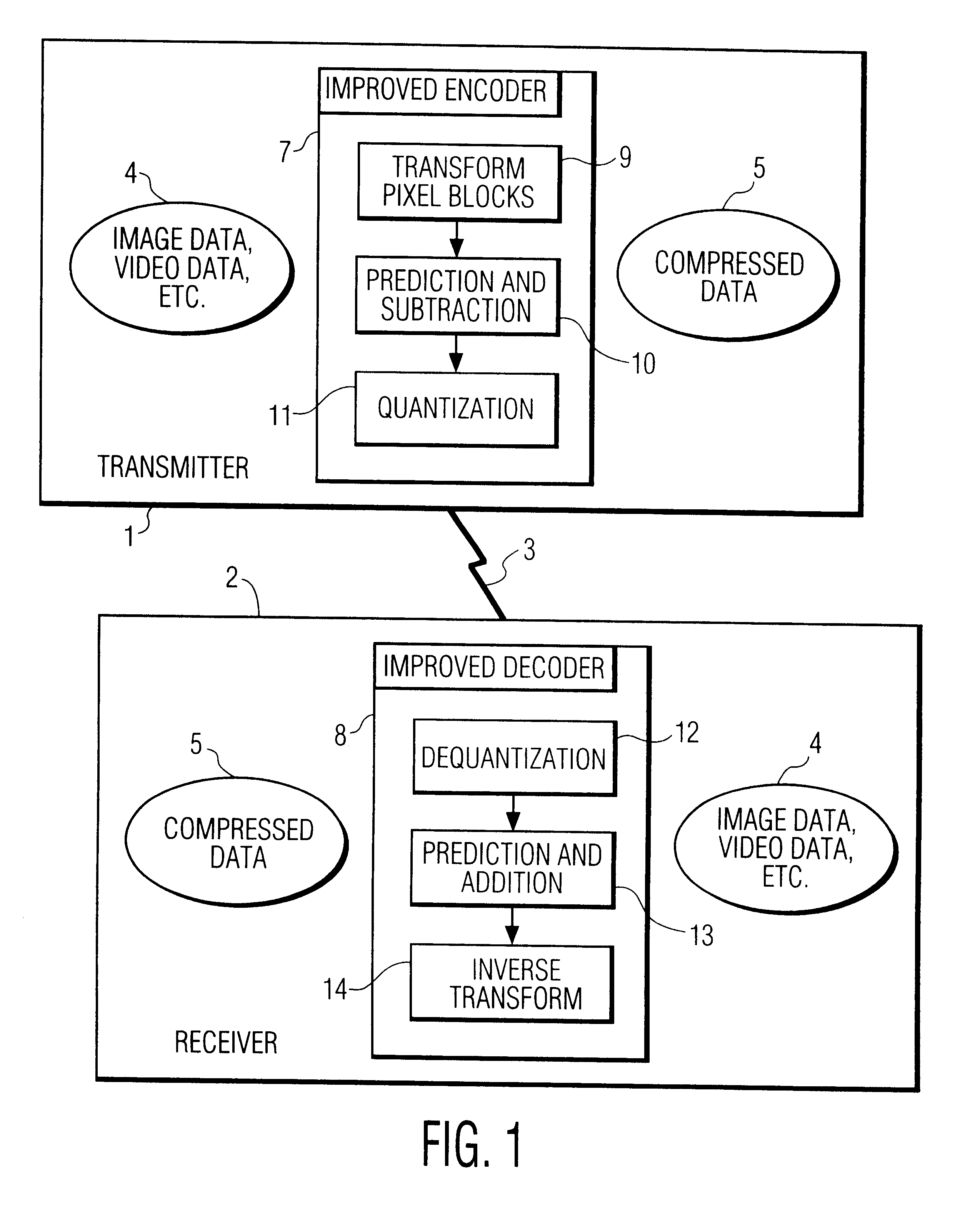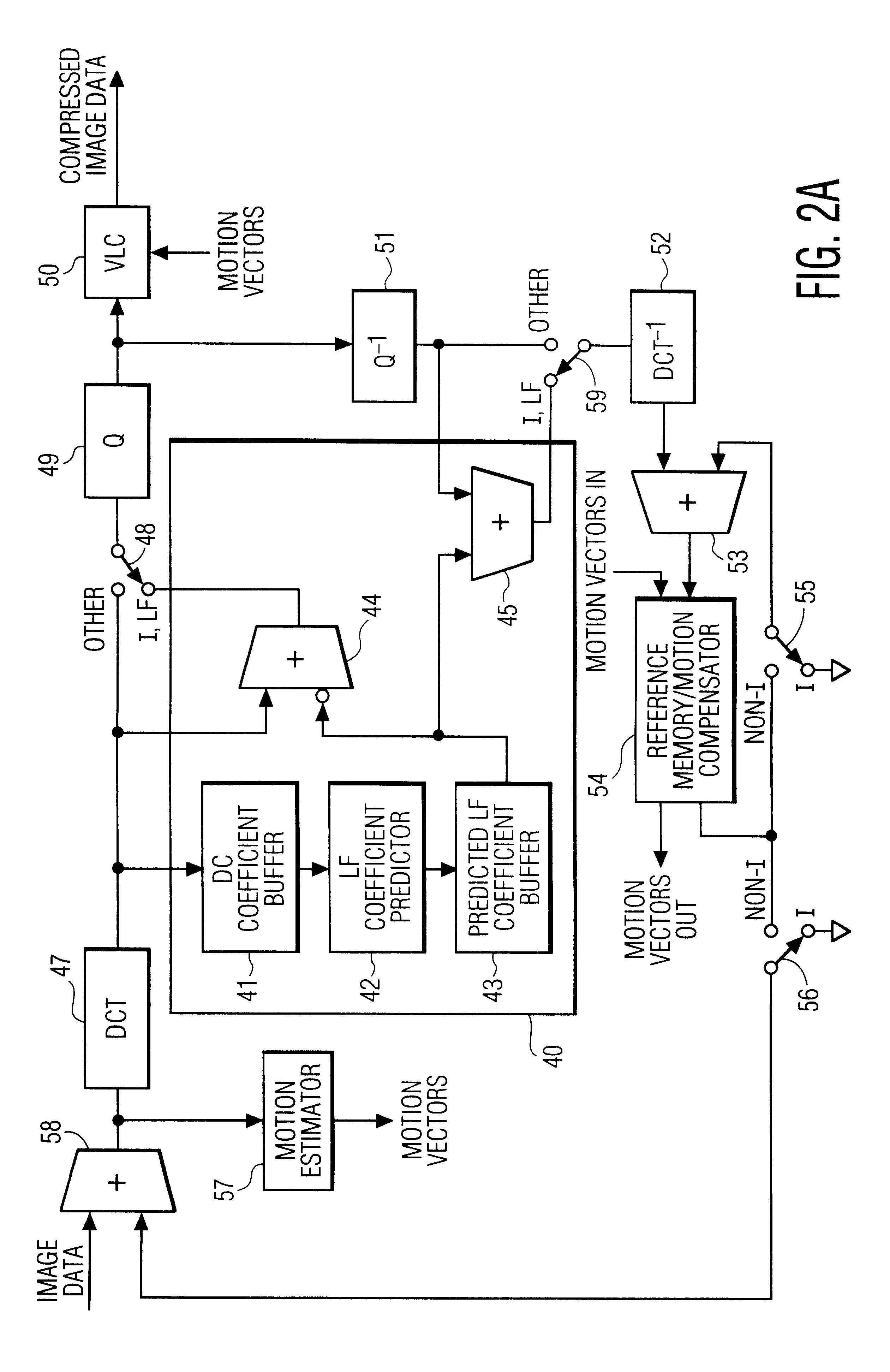System and method for compressing and decompressing images
a compression and image technology, applied in the field of systems and methods for increasing the compression of data streams, can solve problems such as excessive computational resources, requiring maximum improvement, and ignoring any regularities and correlations
- Summary
- Abstract
- Description
- Claims
- Application Information
AI Technical Summary
Benefits of technology
Problems solved by technology
Method used
Image
Examples
Embodiment Construction
In this section, the general method implemented in improved encoder / decoder systems according the present invention is described, followed by exemplary improved MPEG encode / decoder systems.
FIG. 3A illustrates the general method implemented in the systems of the present invention. According to FIG. 3A and as described above, non-overlapping sub-blocks dividing an image are first transformed to a transform, or frequency, domain, and the resulting transform coefficients are input 20 to the general method of this invention. Preferably, 8.times.8 pixel sub-blocks are transformed into the frequency domain by a DCT transform. For each sub-block, from its zero-frequency, or DC, transform coefficient, which is known to be proportional to the average pixel intensity in that sub-block, and from the DC coefficients of the adjacent sub-blocks, step 21 predicts selected low-frequency ("LF") transform coefficients of that block. Then, step 22 forms difference coefficients by subtracting the predic...
PUM
 Login to View More
Login to View More Abstract
Description
Claims
Application Information
 Login to View More
Login to View More - R&D
- Intellectual Property
- Life Sciences
- Materials
- Tech Scout
- Unparalleled Data Quality
- Higher Quality Content
- 60% Fewer Hallucinations
Browse by: Latest US Patents, China's latest patents, Technical Efficacy Thesaurus, Application Domain, Technology Topic, Popular Technical Reports.
© 2025 PatSnap. All rights reserved.Legal|Privacy policy|Modern Slavery Act Transparency Statement|Sitemap|About US| Contact US: help@patsnap.com



